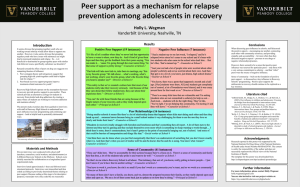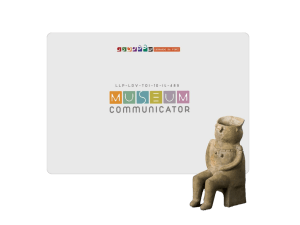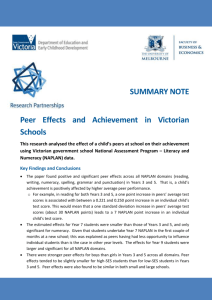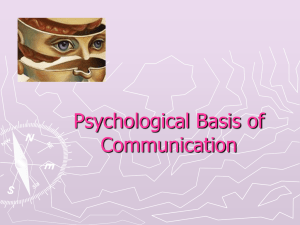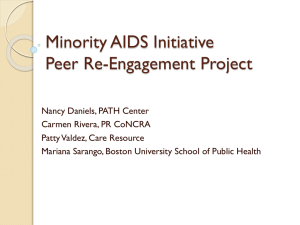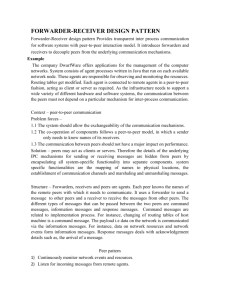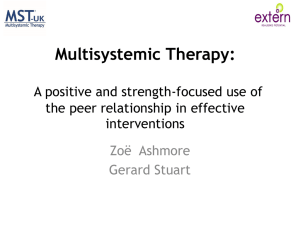PEER PRESSURE
advertisement
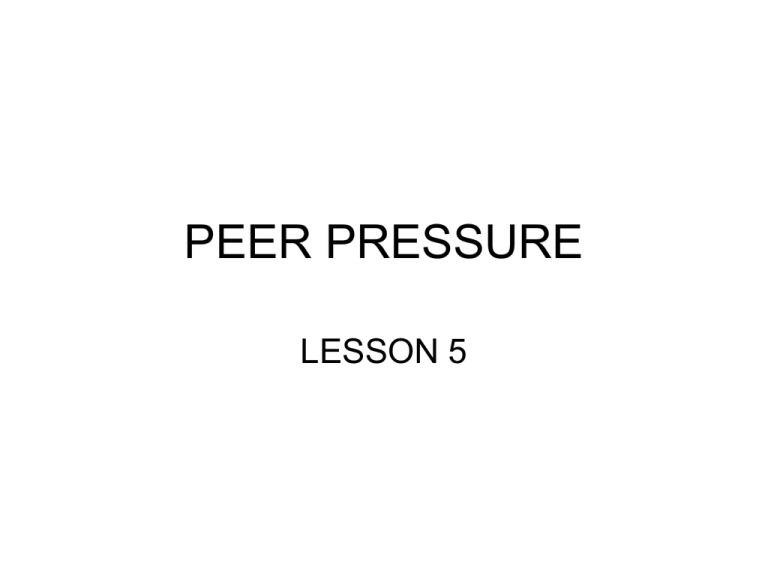
PEER PRESSURE LESSON 5 Peer and Peer Pressure • Peer: is a person of similar age or status • What is “peer pressure?” – Influence that people of similar age or status place on other to behave in a certain way 2 types of peer pressure • Positive peer pressure: influence from peers to behave in a responsible way • Negative peer pressure: influence from peers to behave in a way that is NOT responsible. • Peers who try to force you to make wrong decisions often just want support for their wrong actions!!!!!!!! • They don’t care about your experience of feelings you have as the result of the negative outcomes. 10 Negative Peer Pressure Statements • No one will ever know • What’s the big deal • I do it all the time and have never been caught • We’ll go down together if anything happens • Everybody else is doing it • You’ll look older and more mature • Try it, you’ll like it • You only live once • Don’t be such a wimp • Don’t be chicken Resistance Skills: skills that helps a person say “NO” to an action or to leave a situation • Say NO with self• Avoid people whom make confidence wrong decisions • Give reasons for saying • Resist pressure to engage NO in illegal behavior • Broken-record technique • Influence others to make • Nonverbal behaviors responsible choices. match verbal behavior • Avoid situations in which there is negative pressure • Broken record technique: ways to strengthen a “no” response by repeating the same response several times • Nonverbal behavior: the use of actions to express emotions and thoughts. • Self-confidence: the belief in oneself – You believe in your ideas, feelings, and decisions • Assertive behavior: the honest expression of ideas, feelings, and decisions without worrying or feeling threatened – Show others you are in control of yourself, – You clearly state your thoughts or feelings – you don’t back down on your feelings or thoughts • Passive behavior: holding back of ideas, feelings, and decisions. – Don’t stand up for themselves – Look away when sharing feelings/ making decisions – Lack self confidence • Aggressive behavior: use of words or actions that are disrespectful toward others – Monopolize conversations – Name calling, sarcastic remarks – Threaten others due to lack of their own selfconfidence 3 Steps to be Self-Confident and Assertive • Answer 6 questions & evaluate consequences of your decisions. – Promote health – Protect safety – Follow laws – Show respect for myself and others – Follow guidelines of my parents / responsible adults – Demonstrate good character • Imagine a shield of protection in front of you when peers pressure you to make wrong decisions • When you doubt yourself, talk with a parent, guardian, or other responsible adult. 10 outcomes of giving in to negative peer pressure • • • • Harm health Threaten your safety Break laws Disrespect to yourself and others • Disregard guidelines • Shows poor character • Feeling disappointed in yourself • Feel resentment toward peers • Hurt self-confidence • Feel guilty & ashamed 5 Actions if you have given in to negative peer pressure • Take responsibility for any decisions, actions, or judgments that result – Honesty and don’t blame others • Consider ways to deal with the negative outcomes – Restitution – making good for loss or damage – You must make things right • Examine reasons why you gave in to the negative pressure – Was anything specific? • Make a plan on how to handle similar future situations – Learn from your mistakes – Better prepared for the future • Ask responsible adult to help you review situations in which you gave in to negative peer pressure.


